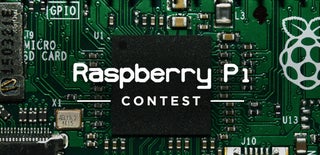Introduction: DINPi - DIN Rail Mount for Raspberry Pi
Raspberry PI boards are the most famous devices for rapid electronic prototyping and DIY home applications. However, their capabilities and flexibility can also be widely applied in the industrial environment.
Step 1: Industrial Raspberry Pi
Industrial Raspberry Pi is probably the most common solution these days to build an industry product without wasting time on fitting and customizing embedded board and Linux based operating system. Raspberry Pi is a ready-to-use Single Board Computer which already suitable for thousands of computing missions that can be built very fast thanks to the huge community and software packages support.
Can we trust on Raspberry Pi as an industrial product?
There are already millions of Raspberry Pis running out there, for thousands of different missions and purposes, and still, the Raspberry Pi considered as stable SBC which doesn’t have any weak points over time. To be honest, going with other Single Board Computer that sold with the tag of "industrial grade" but don’t have such a big community who used it and millions of boards that are already running in production, may be much riskier.
Keep Raspberry Pi and make customizations
Raspbian has been built specifically for the Raspberry Pi family and considered stable. To make Raspbian suitable for Industrial projects, there are a few patches we should do.
Security:
1. Delete the default Pi user, create a new restricted user with though password.
2. Disable the SSH server and any other running server that is not needed.
3. Set Firewall rules using Iptables to make sure no open ports are available.
Behavior:
1. Disable and remove services that are running on boot an to make boot time faster.
2. Develop a simple monitor that will make sure that everything works as planned.
3. Delete Gui if not needed, to save resources.
Stability:
1. Disable upcoming automatic updates and upgrades of Raspbian.
How can we apply Raspberry Pi on industrial products?
There are some quick solutions that can solve the problem of mechanical compatibility with industrial equipment including the innovative DINPi system.
Step 2: Build the DIN Rail
Part List :
- 2×20 pin header (generic)
- 2×20 pin 90 degree header (generic)
- 2×20 pin 90 degree socket (generic)
- DIN rail adaptor (Phoenix Contact 1201578 or generic) – x2
File Gerber Mechanical PCB:
You can download the Gerber files for DINPi here
DINPi is open hardware, you can reply this project by ordering the PCB yourself
Step 3: Device Compatibility
DINPi is fully compatible with all 40-way Raspberry Pi models and clones that including:
- Raspberry Pi 1 Model A+
- Raspberry Pi 1 Model B
- Raspberry Pi 1 Model B+
- Raspberry Pi 2 Model B
- Raspberry Pi 3 Model B & 3+
- Raspberry Pi 4
- Raspberry Pi Zero
- Asus Tinker Board
- Orange Pi
- Odroid
Step 4: Multiple Uses
DINPi can be used in a number of ways depending on your requirements. The "ribbon cable" style board design allows DINPi boards to be used in reverse or upside down without issue. The mirrored pinout allows multiple boards to be connected together using right-angle headers & sockets and can also be used to mount a Raspberry Pi upside-down while maintaining correct GPIO pinout.
DINPi allows plug and play connection for Raspberry Pi add-on boards in a DIN rail mountable package. Multiple boards can be daisy-chained to create an array of connected HATs or pHATs. Simply solder whichever headers / sockets you require for your project.

Participated in the
Raspberry Pi Contest 2020













